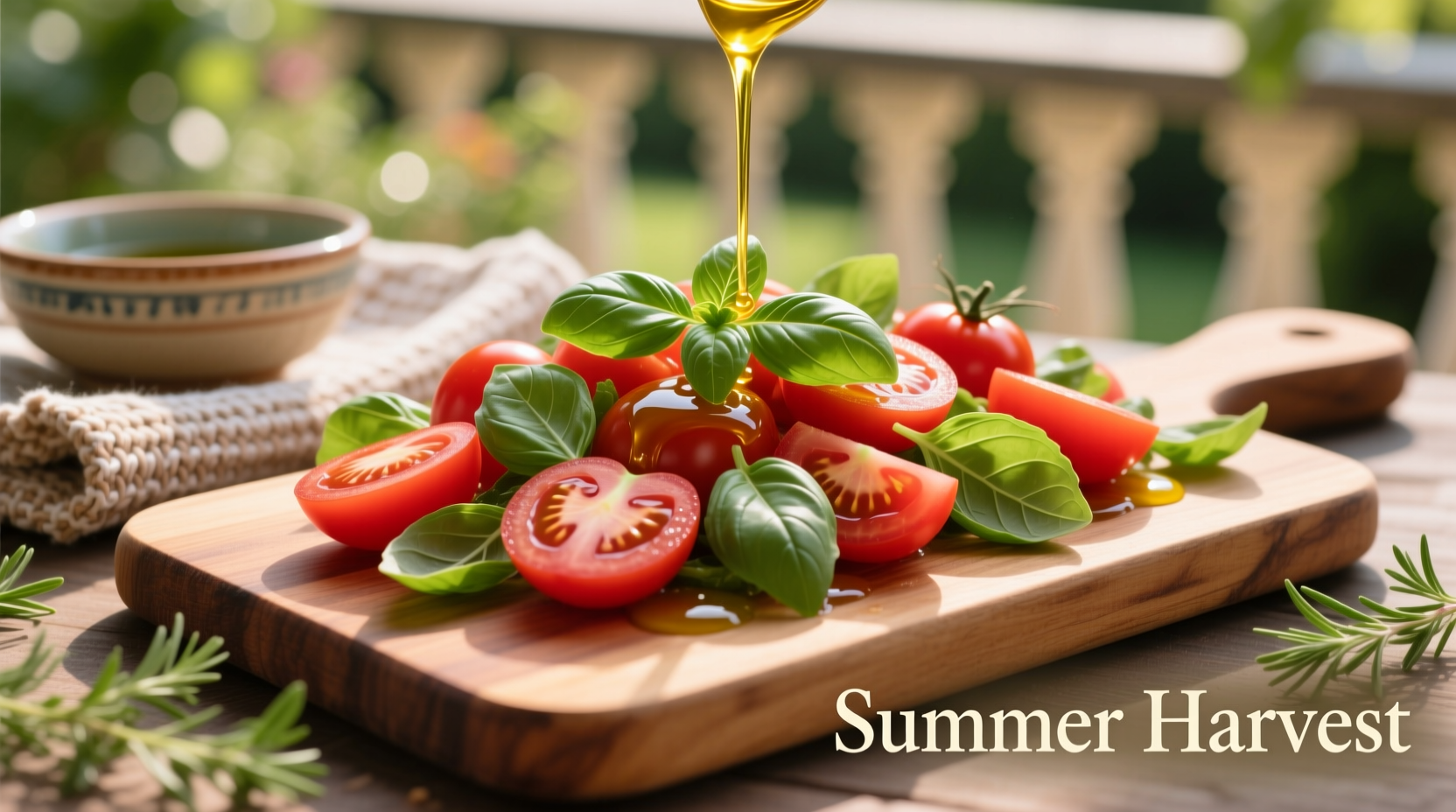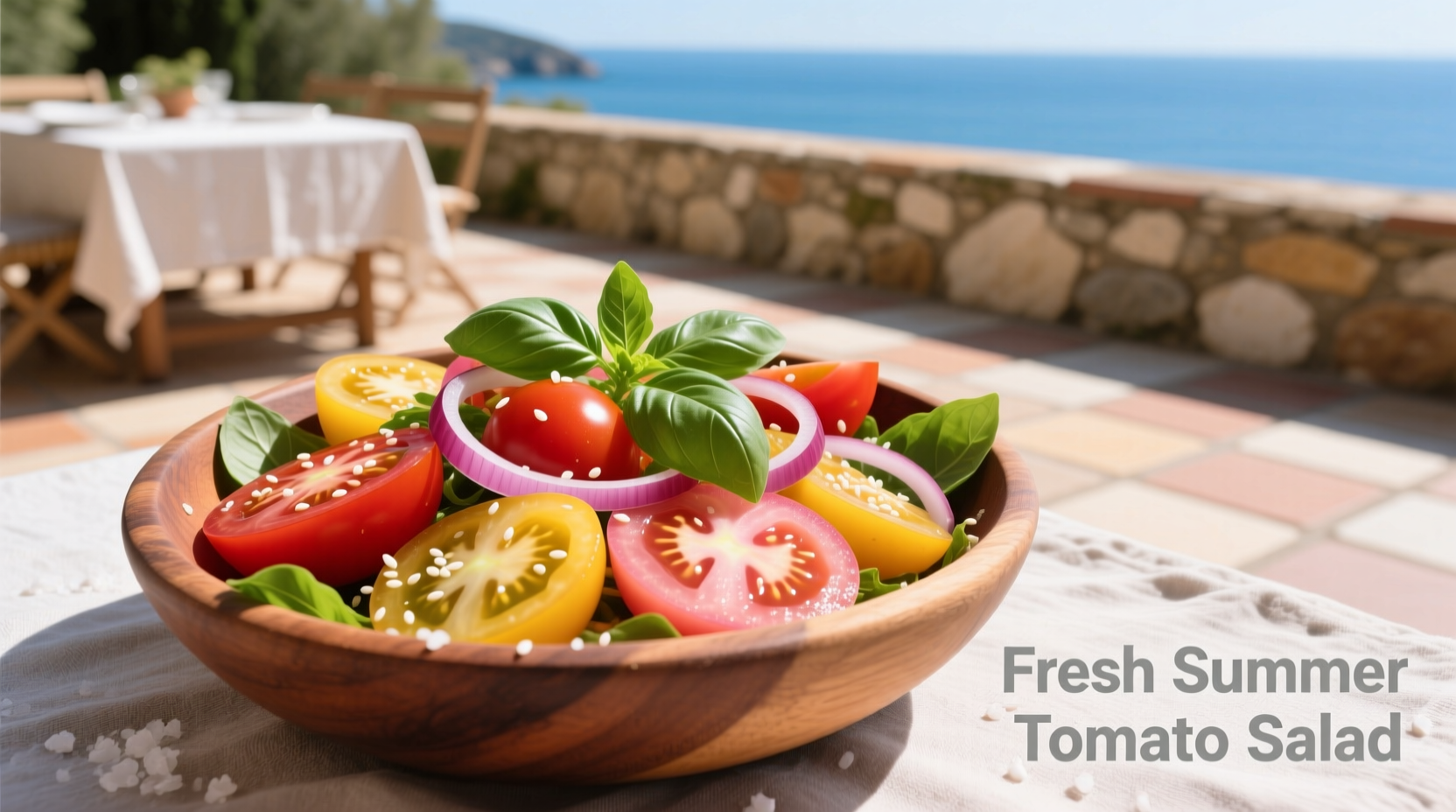There's nothing quite like a perfectly crafted summer tomato salad when tomatoes are at their seasonal peak. Unlike winter varieties that often lack flavor, summer-ripened tomatoes offer complex sweetness balanced with natural acidity that creates an unforgettable eating experience. The secret to an exceptional summer tomato salad isn't complicated—it's understanding how to select, handle, and enhance nature's bounty at its absolute best.
Why Summer Tomatoes Make All the Difference
Tomatoes harvested during their natural summer season contain significantly higher levels of volatile compounds that create that distinctive "tomato" aroma and flavor. According to USDA agricultural research, vine-ripened summer tomatoes contain up to 40% more flavor compounds than greenhouse-grown varieties available year-round. This isn't just about taste—it's science. When tomatoes ripen on the vine under natural sunlight, they develop complex sugar-acid balances that can't be replicated in off-season production.
| Tomato Variety | Best Season | Flavor Profile | Best Salad Application |
|---|---|---|---|
| Beefsteak | July-August | Balanced sweet-tart | Main component, substantial texture |
| Cherry | June-September | Intensely sweet | Color contrast, burst texture |
| Heirloom | August-September | Complex, floral notes | Showcase ingredient, special occasions |
| Roma | July-August | Lower moisture, tangy | Dressings, less watery salads |
This tomato variety comparison, based on data from the University of California Agriculture and Natural Resources (ucanr.edu), helps you select the perfect tomatoes for your summer salad based on texture, flavor, and moisture content.
The Essential Summer Tomato Salad Formula
Professional chefs follow a simple formula for perfect tomato salads: 5 parts tomato, 1 part complementary element, ½ part dressing. This ratio ensures tomatoes remain the star while other elements enhance rather than overwhelm. The critical mistake most home cooks make? Adding dressing too early, which draws out moisture and dilutes flavor.

Step-by-Step Preparation Guide
Step 1: Selection and Handling
Choose tomatoes that feel heavy for their size with smooth, unblemished skin. Avoid refrigeration, which destroys flavor compounds—store at room temperature away from direct sunlight. The FDA recommends consuming fresh tomatoes within 3-5 days of purchase for optimal quality and food safety (fda.gov).
Step 2: Precision Cutting
Use a serrated knife for clean cuts that don't crush the delicate flesh. For large tomatoes, cut into ¾-inch wedges following the natural segmentation. Cherry tomatoes work best halved or quartered depending on size. Never dice tomatoes for salad—this releases too much juice and creates mushiness.
Step 3: Strategic Seasoning
Season tomatoes with flaky sea salt 10-15 minutes before dressing. This draws out some moisture while concentrating flavor, creating a natural juice base for your dressing. Add freshly cracked black pepper just before serving to preserve its volatile compounds.
Step 4: Dressing Application
Combine extra virgin olive oil, aged balsamic vinegar (not regular vinegar), minced shallot, and fresh herbs. Drizzle over tomatoes immediately before serving—never more than 5 minutes ahead. The ideal ratio is 3 parts oil to 1 part acid for balanced flavor without overwhelming the tomatoes.
Perfect Pairings and Occasions
Summer tomato salad shines as part of a complete meal. Pair with grilled proteins for contrast—chicken, fish, or halloumi cheese create perfect complements. For standalone meals, add protein elements like white beans or fresh mozzarella. The salad's acidity cuts through rich foods, making it ideal after heavy dishes.
Timing matters: serve tomato salad as a first course to awaken the palate, or alongside main dishes when temperatures are moderate. Avoid serving in direct sunlight or extremely hot environments, which causes tomatoes to break down rapidly. For best results, keep components separate until ready to serve, especially when preparing for gatherings.
Four Flavor-Boosting Variations
Mediterranean Style
Add thinly sliced cucumber, Kalamata olives, and red onion. Use oregano and lemon zest in the dressing. Perfect with grilled lamb or as part of a mezze platter.
Caprese-Inspired
Layer sliced tomatoes with fresh mozzarella and basil leaves. Drizzle with high-quality olive oil and balsamic reduction. Ideal as a light lunch or appetizer.
Heirloom Showcase
Use multiple heirloom varieties for visual appeal. Keep dressing minimal—just olive oil, flaky salt, and cracked pepper. Best served as a centerpiece salad for special occasions.
Vegan Enhancement
Add toasted pine nuts and avocado slices. Substitute maple syrup for honey in the dressing. Excellent as part of plant-based meals or summer picnics.
Common Mistakes to Avoid
Many home cooks ruin otherwise good tomato salads through common errors. Adding dressing too early causes tomatoes to release water and become soggy. Using cold tomatoes dulls flavor perception—always serve at room temperature. Overloading with too many ingredients distracts from the star ingredient. And crucially, using off-season tomatoes simply cannot deliver the same flavor experience as peak-season varieties.
Storage and Leftover Guidance
Tomato salad is best enjoyed fresh, but you can prepare components separately up to 24 hours ahead. Store cut tomatoes in a single layer on paper towels to absorb excess moisture. Keep dressing separate until serving. Never store dressed tomato salad—it loses texture and flavor within hours. Leftover components can be repurposed: blend extra tomatoes into pasta sauce, use herbs in vinaigrettes, or add cut tomatoes to omelets.











 浙公网安备
33010002000092号
浙公网安备
33010002000092号 浙B2-20120091-4
浙B2-20120091-4